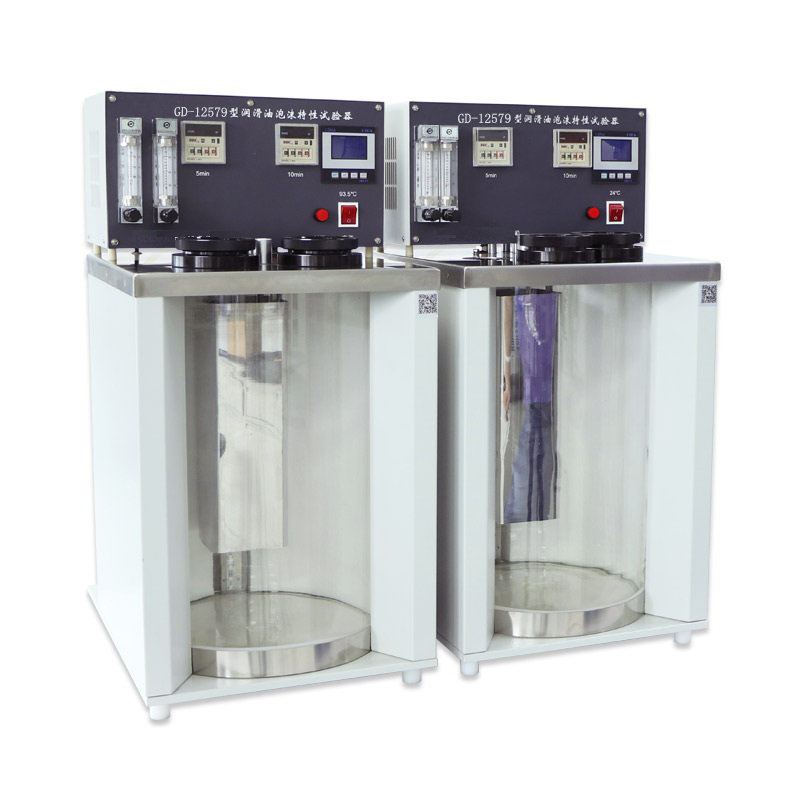- Product Name
- Product Keyword
- Product Model
- Product Summary
- Product Description
- Multi Field Search
Views: 6 Author: Jane Ching Publish Time: 2022-03-02 Origin: Site








Most of the mechanical lubrication systems are lubricated in a cyclic manner, and the lubricating oil flows and circulates continuously under the action of the oil pump of the lubrication system. When the lubricating oil flows in contact with air and is vigorously agitated, it is possible to mix air into the oil and generate foam.
1. The generation and harm of foam:
Foaming properties refer to the tendency of the oil to form foam and the stability of the foam. In the actual use of lubricating oil, due to vibration and agitation, air enters the lubricating oil, and even bubbles are formed. Therefore, it is required to evaluate the tendency of the oil to generate foam and the stability of the foam.
Our GD-12579 foaming characteristic tester ASTM D892 is only used to evaluate the foaming properties of internal combustion engine oil and circulating oil (such as hydraulic oil, compressor oil, etc.).
The generation of foam from lubricant oil has the following hazards”:
A: A large amount of stable foam will increase the volume and easily cause the oil to overflow from the fuel tank;
B: Increase the compressibility of the lubricating oil and reduce the oil pressure. For example, hydraulic oil transmits work by static pressure. Once foam is generated in the oil, the oil pressure in the system will be reduced, thereby destroying the function of transmitting work in the system.
C: Increase the contact area between lubricating oil and air, and accelerate the aging of oil products. This problem is especially serious for air compressor oil.
D: When the lubricating oil with bubbles is compressed, once the bubbles burst under high pressure, the energy generated will impact the metal surface, causing cavitation on the metal surface. This kind of cavitation phenomenon occurs in the bearing bush of some internal combustion engine oils.
Lubricating oils are susceptible to formulation actives and detergents, extreme pressure additives and corrosion inhibitors that greatly increase the oil's tendency to bubble. The foam stability of lubricating oil varies with viscosity and surface tension. The stability of foam is inversely proportional to the viscosity of the oil. At the same time, with the increase of temperature, the stability of foam decreases, and oil with lower viscosity forms large and easily disappeared bubbles. Dispersed and stable small air bubbles are produced in high viscosity oils. In order to eliminate foam in lubricating oil, surface tension defoamer is usually added to lubricating oil, such as non-silicon defoamer of methyl silicone oil, etc.


